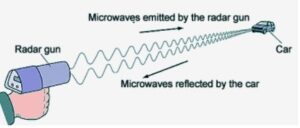LiDAR vs Radar in Traffic Enforcement
Explore the key differences between LiDAR and Radar technology used in traffic enforcement. Learn how each technology impacts your traffic ticket cases.
LiDAR vs Radar: Navigating the Technological Landscape in Traffic Enforcement
In today’s technological era, understanding the intricacies of traffic enforcement tools like LiDAR and Radar is crucial. Whether you’re contesting a speeding ticket or just curious about how traffic speed is monitored, this page offers an overview of the differences.
______________________________________
What is LiDAR?

LiDAR, which stands for Light Detection and Ranging, is a cutting-edge technology used in various applications, including traffic enforcement. It operates by emitting laser pulses and measures the time they take to bounce back to the sensor. This method provides highly accurate distance measurements and detailed 3D maps of the surrounding area.
______________________________________
What is Radar?

Radar, an acronym for Radio Detection and Ranging, is a well-established technology used in many fields, including traffic speed enforcement. Radar systems emit radio waves and measure how they reflect back from objects, determining their speed and distance. This technology is renowned for its long-range detection capabilities and effectiveness in adverse weather conditions.
Key Differences Between LiDAR and Radar
The fundamental differences between these technologies lie in their operational methods and applications. LiDAR’s laser-based system excels in providing precise measurements and high-resolution maps, making it ideal for tasks requiring detailed object recognition and mapping. Conversely, Radar’s radio wave-based system offers robust performance in various environmental conditions, making it a staple in aviation and maritime operations, as well as in traffic speed enforcement.
How These Technologies Affect Traffic Ticket Cases
In traffic ticket cases, understanding whether LiDAR or Radar was used can significantly impact the defense strategy. LiDAR’s precision in speed measurement often leaves little room for contesting the recorded speed. However, its accuracy can be influenced by factors like device calibration and operator expertise. On the other hand, while Radar is reliable, it can sometimes register speeds from the wrong vehicle, especially in heavy traffic, offering a potential angle for defense.
Choose the Right Legal Assistance
Our law firm handles navigating the complexities of traffic ticket cases involving advanced technologies like LiDAR and Radar. Our expertise ensures that your case is handled with the utmost precision and knowledge, giving you the best chance for a favorable outcome.
Facing a traffic ticket?
Unsure how LiDAR or Radar evidence affects your case? Contact our law firm today for expert legal assistance.
CLICK HERE to view the VTL codes in New York.
CLICK HERE for information regarding books published by Attorney Ronald Cook.
CLICK HERE to contact the law firm.


